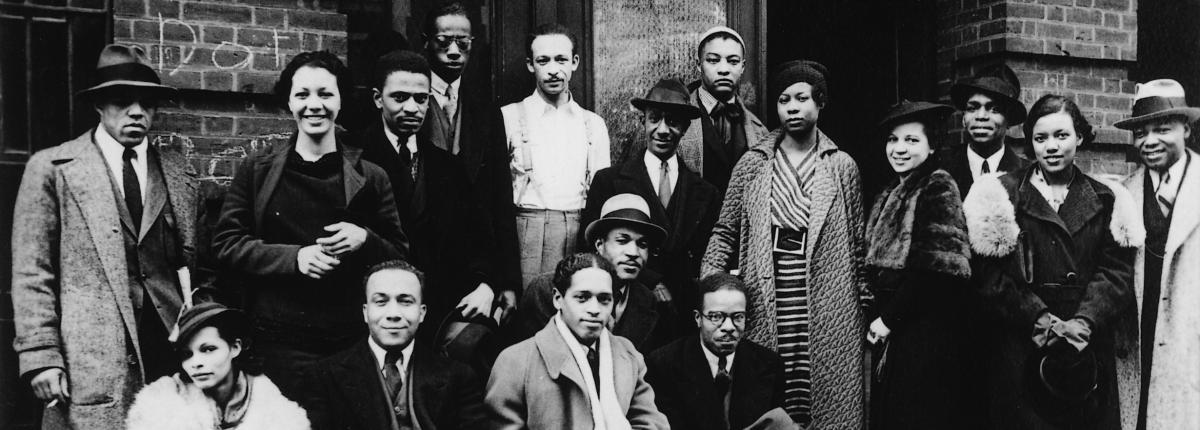The Artists of the Harlem Renaissance

Part 1: An Artistic Explosion
Introduce:
- Watch this short video on the Harlem Renaissance from HISTORY.
- As students are watching, they should take notes in response to the following questions:
- What was the Harlem Renaissance?
- What was the goal of the artists of the Harlem Renaissance?
- What different kinds of art by African Americans were prominent during the Harlem Renaissance and who were some of the most famous artists of this time?
- If necessary, define “prominent” for students: most famous or well known.
- What impact did the Great Depression have on the Harlem Renaissance?
- What is the legacy of the Harlem Renaissance?
- If necessary, define “legacy” for students: something that’s been left behind for future generations.
- After watching the video, have students share their responses to the questions.
Part 2: A Closer Look
Analyze:
- In partners, students will examine three artistic works from the Harlem Renaissance to IDENTIFY the major themes often portrayed by Harlem Renaissance artists. (Note: Select from this list the works best suited for your students. Consider their ability to handle difficult topics, reading levels, and prior knowledge on race relations following the Civil War.)
- I, Too by Langston Hughes
- Strange Fruit by Billie Holiday (Please note: this link contains graphic violent imagery in some of the annotations.)
- The Library by Jacob Lawrence
- Dreams by Langston Hughes
- Panel no. 3 by Jacob Lawrence
- The Harp by Augusta Savage
- Panel no. 58 by Jacob Lawrence
- Students will use this Investigating Art guided questions exercise to analyze each piece of art. There is a separate set of questions for visual art, poems, and music. Use the corresponding graphic organizer(s) based on the artistic works you selected for your students.
Part 3: Themes of the Harlem Renaissance
- After analyzing each artistic work, students will compare the three artistic pieces using this Comparing Art guided questions exercise.
- Once students have finished comparing the artworks, have them develop a list of major themes of the Harlem Renaissance that they noticed. Common themes you may want to address with your students include: the lasting influence of slavery, Black identity, the effects of institutional racism, the dilemmas of performing and writing for elite white audiences, and how to convey the experience of modern black life in the urban North. They can also use these themes for the Legacy of the Harlem Renaissance lesson.
- Have students select one of the themes from your class list about the major themes of the Harlem Renaissance.
- Students then write down a one-sentence statement in response to the question: What do I want to say about this theme?
- For example: If a student selects “Black identity” as the theme on which they want to focus, their response to this question could be “Black is beautiful.”
- Building upon their responses, students create artworks to represent their statements responding to a major theme of the Harlem Renaissance:
- Brainstorm ways to represent the statements. What will be the most important components to convey in the artwork?
- Select a medium for representing the statement, such as poetry, song lyrics, short story, visual art.
- Create the artwork representing the statement.
- Create a classroom gallery:
- Each student presents on the theme they selected and the statement they wanted to make with their art.
- Students explore each other’s artworks and reflect on how they all chose to represent the themes.
Additional Context
Lesson Context
In the 1920s, Harlem became a coveted address. The neighborhood in New York City was synonymous with an outpouring of production in the visual arts, music, literature, theater, and dance that some began referring to the creative era as the Harlem Renaissance.
Famous artists of the Harlem Renaissance included: sociologist and historian W.E.B. Du Bois, writers Claude McKay, Langton Hughes, and Zora Neale Hurston, musician Duke Ellington, and entertainer Josephine Baker.These artists strived to express their racial identity and pride.
Jacob Lawrence, an artist of the Harlem Renaissance, believed his paintings were “a portrait of myself, a portrait of my community.” The community he grew up around included artist and mentor Charles Alston and leading philosopher Alain LeRoy Locke.
The people of Harlem and their rich heritage were constant sources of inspiration for Lawrence. The community experience—its triumphs and tragedies, its dreams and disappointments, its pleasures and humility, collectively forged by the Great Migration, the Harlem Renaissance, and the Depression era—lives on in his paintings.
Key Terms
306 Workshop: A collective made up of artists, musicians, and writers who rented studio space at 306 West 141st Street in Harlem during the Harlem Renaissance.
Harlem Renaissance: The largest concentration of African Americans who migrated during the Great Migration moved to Harlem. From the 1910s to mid-1930s, the neighborhood of Harlem in New York City became a hub of African American culture, with an explosion of literature, music, theater, and the arts.
Institutional Racism: A form of racism (prejudice and discrimination based on race and the belief that your own race is superior) in social and political institutions. Specifically, institutional racism is reflected in discriminatory practices, policies, and behaviors within spheres such as economics, the criminal justice system, education, employment, housing, health care, income, and political power.


